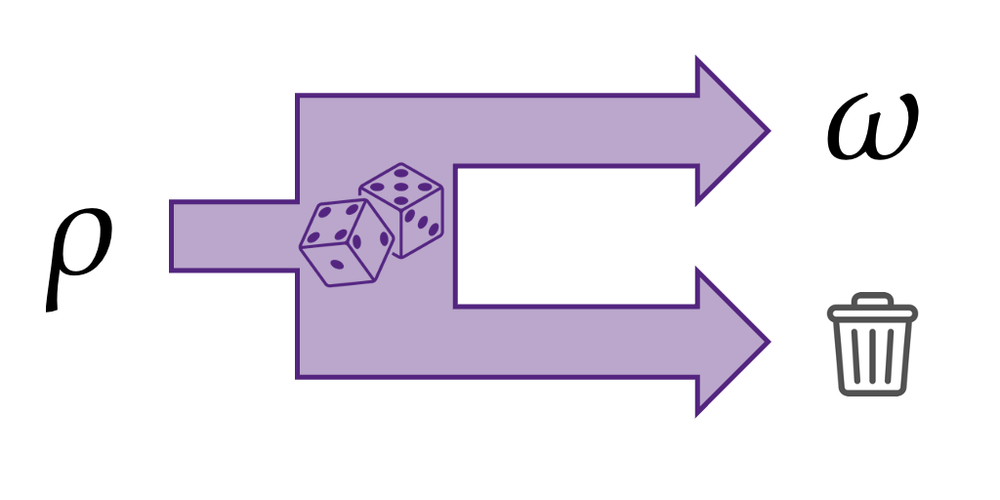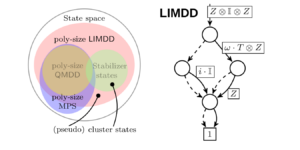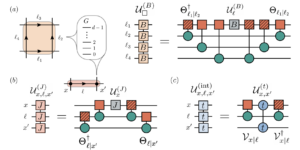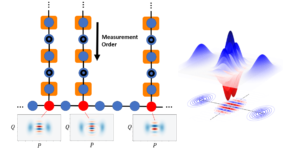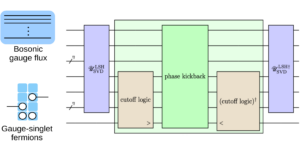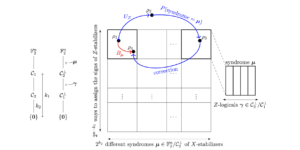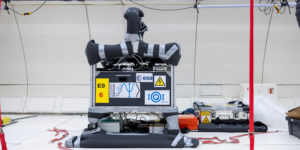Department of Physics, Graduate School of Science, The University of Tokyo, Bunkyo-ku, Tokyo 113-0033, Japan
Find this paper interesting or want to discuss? Scite or leave a comment on SciRate.
Abstract
We develop two general approaches to characterising the manipulation of quantum states by means of probabilistic protocols constrained by the limitations of some quantum resource theory.
First, we give a general necessary condition for the existence of a physical transformation between quantum states, obtained using a recently introduced resource monotone based on the Hilbert projective metric. In all affine quantum resource theories (e.g. coherence, asymmetry, imaginarity) as well as in entanglement distillation, we show that the monotone provides a necessary and sufficient condition for one-shot resource convertibility under resource-non-generating operations, and hence no better restrictions on all probabilistic protocols are possible. We use the monotone to establish improved bounds on the performance of both one-shot and many-copy probabilistic resource distillation protocols.
Complementing this approach, we introduce a general method for bounding achievable probabilities in resource transformations under resource-non-generating maps through a family of convex optimisation problems. We show it to tightly characterise single-shot probabilistic distillation in broad types of resource theories, allowing an exact analysis of the trade-offs between the probabilities and errors in distilling maximally resourceful states. We demonstrate the usefulness of both of our approaches in the study of quantum entanglement distillation.
Featured image: The article studies the possibility of transforming a state ρ into another state ω using general probabilistic protocols, which succeed only with some probability.
► BibTeX data
► References
[1] P. M. Alberti and A. Uhlmann, “A problem relating to positive linear maps on matrix algebras,” Rep. Math. Phys. 18, 163 (1980).
https://doi.org/10.1016/0034-4877(80)90083-X
[2] M. A. Nielsen, “Conditions for a Class of Entanglement Transformations,” Phys. Rev. Lett. 83, 436 (1999).
https://doi.org/10.1103/PhysRevLett.83.436
[3] G. Vidal, “Entanglement of Pure States for a Single Copy,” Phys. Rev. Lett. 83, 1046 (1999).
https://doi.org/10.1103/PhysRevLett.83.1046
[4] A. Chefles, R. Jozsa, and A. Winter, “On the existence of physical transformations between sets of quantum states,” Int. J. Quantum Inform. 02, 11 (2004).
https://doi.org/10.1142/S0219749904000031
[5] F. Buscemi, “Comparison of Quantum Statistical Models: Equivalent Conditions for Sufficiency,” Commun. Math. Phys. 310, 625 (2012).
https://doi.org/10.1007/s00220-012-1421-3
[6] D. Reeb, M. J. Kastoryano, and M. M. Wolf, “Hilbert’s projective metric in quantum information theory,” J. Math. Phys. 52, 082201 (2011).
https://doi.org/10.1063/1.3615729
[7] T. Heinosaari, M. A. Jivulescu, D. Reeb, and M. M. Wolf, “Extending quantum operations,” J. Math. Phys. 53, 102208 (2012).
https://doi.org/10.1063/1.4755845
[8] M. Horodecki and J. Oppenheim, “Fundamental limitations for quantum and nanoscale thermodynamics,” Nat. Commun. 4, 2059 (2013a).
https://doi.org/10.1038/ncomms3059
[9] G. Gour, M. P. Müller, V. Narasimhachar, R. W. Spekkens, and N. Yunger Halpern, “The resource theory of informational nonequilibrium in thermodynamics,” Phys. Rep. 583, 1 (2015).
https://doi.org/10.1016/j.physrep.2015.04.003
[10] A. M. Alhambra, J. Oppenheim, and C. Perry, “Fluctuating States: What is the Probability of a Thermodynamical Transition?” Phys. Rev. X 6, 041016 (2016).
https://doi.org/10.1103/PhysRevX.6.041016
[11] F. Buscemi and G. Gour, “Quantum relative Lorenz curves,” Phys. Rev. A 95, 012110 (2017).
https://doi.org/10.1103/PhysRevA.95.012110
[12] G. Gour, “Quantum resource theories in the single-shot regime,” Phys. Rev. A 95, 062314 (2017).
https://doi.org/10.1103/PhysRevA.95.062314
[13] G. Gour, D. Jennings, F. Buscemi, R. Duan, and I. Marvian, “Quantum majorization and a complete set of entropic conditions for quantum thermodynamics,” Nat. Commun. 9, 5352 (2018).
https://doi.org/10.1038/s41467-018-06261-7
[14] R. Takagi and B. Regula, “General Resource Theories in Quantum Mechanics and Beyond: Operational Characterization via Discrimination Tasks,” Phys. Rev. X 9, 031053 (2019).
https://doi.org/10.1103/PhysRevX.9.031053
[15] Z.-W. Liu, K. Bu, and R. Takagi, “One-Shot Operational Quantum Resource Theory,” Phys. Rev. Lett. 123, 020401 (2019).
https://doi.org/10.1103/PhysRevLett.123.020401
[16] F. Buscemi, D. Sutter, and M. Tomamichel, “An information-theoretic treatment of quantum dichotomies,” Quantum 3, 209 (2019).
https://doi.org/10.22331/q-2019-12-09-209
[17] M. Dall’Arno, F. Buscemi, and V. Scarani, “Extension of the Alberti-Ulhmann criterion beyond qubit dichotomies,” Quantum 4, 233 (2020).
https://doi.org/10.22331/q-2020-02-20-233
[18] B. Regula, K. Bu, R. Takagi, and Z.-W. Liu, “Benchmarking one-shot distillation in general quantum resource theories,” Phys. Rev. A 101, 062315 (2020).
https://doi.org/10.1103/PhysRevA.101.062315
[19] W. Zhou and F. Buscemi, “General state transitions with exact resource morphisms: A unified resource-theoretic approach,” J. Phys. A: Math. Theor. 53, 445303 (2020).
https://doi.org/10.1088/1751-8121/abafe5
[20] M. Horodecki and J. Oppenheim, “(Quantumness in the context of) Resource theories,” Int. J. Mod. Phys. B 27, 1345019 (2013b).
https://doi.org/10.1142/S0217979213450197
[21] E. Chitambar and G. Gour, “Quantum resource theories,” Rev. Mod. Phys. 91, 025001 (2019).
https://doi.org/10.1103/RevModPhys.91.025001
[22] F. G. S. L. Brandão and G. Gour, “Reversible framework for quantum resource theories,” Phys. Rev. Lett. 115, 070503 (2015).
https://doi.org/10.1103/PhysRevLett.115.070503
[23] K. Fang and Z.-W. Liu, “No-Go Theorems for Quantum Resource Purification,” Phys. Rev. Lett. 125, 060405 (2020).
https://doi.org/10.1103/PhysRevLett.125.060405
[24] T. Gonda and R. W. Spekkens, “Monotones in General Resource Theories,” arXiv:1912.07085 (2019).
arXiv:1912.07085
[25] C.-Y. Hsieh, “Resource Preservability,” Quantum 4, 244 (2020).
https://doi.org/10.22331/q-2020-03-19-244
[26] K. Kuroiwa and H. Yamasaki, “General Quantum Resource Theories: Distillation, Formation and Consistent Resource Measures,” Quantum 4, 355 (2020).
https://doi.org/10.22331/q-2020-11-01-355
[27] G. Ferrari, L. Lami, T. Theurer, and M. B. Plenio, “Asymptotic state transformations of continuous variable resources,” arXiv:2010.00044 (2020).
arXiv:2010.00044
[28] B. Regula and R. Takagi, “Fundamental limitations on distillation of quantum channel resources,” Nat. Commun. 12, 4411 (2021).
https://doi.org/10.1038/s41467-021-24699-0
[29] K. Fang and Z.-W. Liu, “No-Go Theorems for Quantum Resource Purification: New Approach and Channel Theory,” PRX Quantum 3, 010337 (2022).
https://doi.org/10.1103/PRXQuantum.3.010337
[30] C. H. Bennett, D. P. DiVincenzo, J. A. Smolin, and W. K. Wootters, “Mixed-state entanglement and quantum error correction,” Phys. Rev. A 54, 3824 (1996a).
https://doi.org/10.1103/PhysRevA.54.3824
[31] R. Horodecki, P. Horodecki, M. Horodecki, and K. Horodecki, “Quantum entanglement,” Rev. Mod. Phys. 81, 865 (2009).
https://doi.org/10.1103/RevModPhys.81.865
[32] S. Bravyi and A. Kitaev, “Universal quantum computation with ideal Clifford gates and noisy ancillas,” Phys. Rev. A 71, 022316 (2005).
https://doi.org/10.1103/PhysRevA.71.022316
[33] E. T. Campbell, B. M. Terhal, and C. Vuillot, “Roads towards fault-tolerant universal quantum computation,” Nature 549, 172 (2017).
https://doi.org/10.1038/nature23460
[34] H.-K. Lo and S. Popescu, “Concentrating entanglement by local actions: Beyond mean values,” Phys. Rev. A 63, 022301 (2001).
https://doi.org/10.1103/PhysRevA.63.022301
[35] W. Dür, G. Vidal, and J. I. Cirac, “Three qubits can be entangled in two inequivalent ways,” Phys. Rev. A 62, 062314 (2000).
https://doi.org/10.1103/PhysRevA.62.062314
[36] M. Horodecki, P. Horodecki, and R. Horodecki, “General teleportation channel, singlet fraction, and quasidistillation,” Phys. Rev. A 60, 1888 (1999a).
https://doi.org/10.1103/PhysRevA.60.1888
[37] F. Rozpędek, T. Schiet, L. P. Thinh, D. Elkouss, A. C. Doherty, and S. Wehner, “Optimizing practical entanglement distillation,” Phys. Rev. A 97, 062333 (2018).
https://doi.org/10.1103/PhysRevA.97.062333
[38] K. Fang, X. Wang, L. Lami, B. Regula, and G. Adesso, “Probabilistic Distillation of Quantum Coherence,” Phys. Rev. Lett. 121, 070404 (2018).
https://doi.org/10.1103/PhysRevLett.121.070404
[39] J. I. de Vicente, C. Spee, and B. Kraus, “Maximally Entangled Set of Multipartite Quantum States,” Phys. Rev. Lett. 111, 110502 (2013).
https://doi.org/10.1103/PhysRevLett.111.110502
[40] G. Gour, B. Kraus, and N. R. Wallach, “Almost all multipartite qubit quantum states have trivial stabilizer,” J. Math. Phys. 58, 092204 (2017).
https://doi.org/10.1063/1.5003015
[41] D. Sauerwein, N. R. Wallach, G. Gour, and B. Kraus, “Transformations among Pure Multipartite Entangled States via Local Operations are Almost Never Possible,” Phys. Rev. X 8, 031020 (2018).
https://doi.org/10.1103/PhysRevX.8.031020
[42] P. J. Bushell, “Hilbert’s metric and positive contraction mappings in a Banach space,” Arch. Rat. Mech. Anal. 52, 330 (1973).
https://doi.org/10.1007/BF00247467
[43] B. Regula, “Probabilistic Transformations of Quantum Resources,” Phys. Rev. Lett. 128, 110505 (2022).
https://doi.org/10.1103/PhysRevLett.128.110505
[44] I. Devetak, A. W. Harrow, and A. J. Winter, “A Resource Framework for Quantum Shannon Theory,” IEEE Trans. Inf. Theory 54, 4587 (2008).
https://doi.org/10.1109/TIT.2008.928980
[45] B. Coecke, T. Fritz, and R. W. Spekkens, “A mathematical theory of resources,” Inf. Comput. 250, 59 (2016).
https://doi.org/10.1016/j.ic.2016.02.008
[46] L. del Rio, L. Kraemer, and R. Renner, “Resource theories of knowledge,” arXiv:1511.08818 (2015).
arXiv:1511.08818
[47] Y. Liu and X. Yuan, “Operational resource theory of quantum channels,” Phys. Rev. Research 2, 012035 (2020).
https://doi.org/10.1103/PhysRevResearch.2.012035
[48] G. Gour and A. Winter, “How to Quantify a Dynamical Quantum Resource,” Phys. Rev. Lett. 123, 150401 (2019).
https://doi.org/10.1103/PhysRevLett.123.150401
[49] T. Eggeling, K. G. H. Vollbrecht, R. F. Werner, and M. M. Wolf, “Distillability via Protocols Respecting the Positivity of Partial Transpose,” Phys. Rev. Lett. 87, 257902 (2001).
https://doi.org/10.1103/PhysRevLett.87.257902
[50] K. Audenaert, M. B. Plenio, and J. Eisert, “Entanglement Cost under Positive-Partial-Transpose-Preserving Operations,” Phys. Rev. Lett. 90, 027901 (2003).
https://doi.org/10.1103/PhysRevLett.90.027901
[51] S. Ishizaka, “Bound Entanglement Provides Convertibility of Pure Entangled States,” Phys. Rev. Lett. 93, 190501 (2004).
https://doi.org/10.1103/PhysRevLett.93.190501
[52] F. G. S. L. Brandão and M. B. Plenio, “A Reversible Theory of Entanglement and its Relation to the Second Law,” Commun. Math. Phys. 295, 829 (2010).
https://doi.org/10.1007/s00220-010-1003-1
[53] M. Berta, F. G. S. L. Brandão, G. Gour, L. Lami, M. B. Plenio, B. Regula, and M. Tomamichel, “On a gap in the proof of the generalised quantum Stein’s lemma and its consequences for the reversibility of quantum resources,” arXiv:2205.02813 (2022).
arXiv:2205.02813
[54] P. Faist, J. Oppenheim, and R. Renner, “Gibbs-preserving maps outperform thermal operations in the quantum regime,” New J. Phys. 17, 043003 (2015).
https://doi.org/10.1088/1367-2630/17/4/043003
[55] E. Chitambar and G. Gour, “Critical examination of incoherent operations and a physically consistent resource theory of quantum coherence,” Phys. Rev. Lett. 117, 030401 (2016).
https://doi.org/10.1103/PhysRevLett.117.030401
[56] L. Lami, B. Regula, and G. Adesso, “Generic Bound Coherence under Strictly Incoherent Operations,” Phys. Rev. Lett. 122, 150402 (2019).
https://doi.org/10.1103/PhysRevLett.122.150402
[57] L. Lami, “Completing the Grand Tour of Asymptotic Quantum Coherence Manipulation,” IEEE Trans. Inf. Theory 66, 2165 (2020).
https://doi.org/10.1109/TIT.2019.2945798
[58] P. Contreras-Tejada, C. Palazuelos, and J. I. de Vicente, “Resource Theory of Entanglement with a Unique Multipartite Maximally Entangled State,” Phys. Rev. Lett. 122, 120503 (2019).
https://doi.org/10.1103/PhysRevLett.122.120503
[59] L. Lami and B. Regula, “No second law of entanglement manipulation after all,” arXiv:2111.02438 (2021).
arXiv:2111.02438
[60] P. Faist and R. Renner, “Fundamental Work Cost of Quantum Processes,” Phys. Rev. X 8, 021011 (2018).
https://doi.org/10.1103/PhysRevX.8.021011
[61] E. B. Davies and J. T. Lewis, “An operational approach to quantum probability,” Commun. Math. Phys. 17, 239 (1970).
https://doi.org/10.1007/BF01647093
[62] M. Ozawa, “Quantum measuring processes of continuous observables,” J. Math. Phys. 25, 79 (1984).
https://doi.org/10.1063/1.526000
[63] V. Vedral, M. B. Plenio, M. A. Rippin, and P. L. Knight, “Quantifying Entanglement,” Phys. Rev. Lett. 78, 2275 (1997).
https://doi.org/10.1103/PhysRevLett.78.2275
[64] V. Vedral and M. B. Plenio, “Entanglement Measures and Purification Procedures,” Phys. Rev. A 57, 1619 (1998).
https://doi.org/10.1103/PhysRevA.57.1619
[65] G. Vidal, “Entanglement monotones,” J. Mod. Opt. 47, 355 (2000).
https://doi.org/10.1080/09500340008244048
[66] G. Vidal and R. Tarrach, “Robustness of entanglement,” Phys. Rev. A 59, 141 (1999).
https://doi.org/10.1103/PhysRevA.59.141
[67] N. Datta, “Min- and Max-Relative Entropies and a New Entanglement Monotone,” IEEE Trans. Inf. Theory 55, 2816 (2009).
https://doi.org/10.1109/TIT.2009.2018325
[68] R. Takagi, B. Regula, K. Bu, Z.-W. Liu, and G. Adesso, “Operational Advantage of Quantum Resources in Subchannel Discrimination,” Phys. Rev. Lett. 122, 140402 (2019).
https://doi.org/10.1103/PhysRevLett.122.140402
[69] M. Lewenstein and A. Sanpera, “Separability and Entanglement of Composite Quantum Systems,” Phys. Rev. Lett. 80, 2261 (1998).
https://doi.org/10.1103/PhysRevLett.80.2261
[70] R. Uola, T. Bullock, T. Kraft, J.-P. Pellonpää, and N. Brunner, “All Quantum Resources Provide an Advantage in Exclusion Tasks,” Phys. Rev. Lett. 125, 110402 (2020).
https://doi.org/10.1103/PhysRevLett.125.110402
[71] A. F. Ducuara and P. Skrzypczyk, “Operational Interpretation of Weight-Based Resource Quantifiers in Convex Quantum Resource Theories,” Phys. Rev. Lett. 125, 110401 (2020).
https://doi.org/10.1103/PhysRevLett.125.110401
[72] E. Kohlberg and J. W. Pratt, “The Contraction Mapping Approach to the Perron-Frobenius Theory: Why Hilbert’s Metric?” Math. Oper. Res. 7, 198 (1982).
https://www.jstor.org/stable/3689541
[73] R. G. Douglas, “On Majorization, Factorization, and Range Inclusion of Operators on Hilbert Space,” Proc. Amer. Math. Soc. 17, 413 (1966).
https://doi.org/10.2307/2035178
[74] J. P. Ponstein, “Approaches to the Theory of Optimization” (Cambridge University Press, 2004).
[75] R. T. Rockafellar, “Convex Analysis” (Princeton University Press, Princeton, 1970).
[76] E. Haapasalo, M. Sedlák, and M. Ziman, “Distance to boundary and minimum-error discrimination,” Phys. Rev. A 89, 062303 (2014).
https://doi.org/10.1103/PhysRevA.89.062303
[77] A. Kent, “Entangled Mixed States and Local Purification,” Phys. Rev. Lett. 81, 2839 (1998).
https://doi.org/10.1103/PhysRevLett.81.2839
[78] E. Jane, “Purification of two-qubit mixed states,” Quant. Inf. Comput. 2, 348 (2002), arXiv:quant-ph/0205107.
arXiv:quant-ph/0205107
[79] P. Horodecki and M. Demianowicz, “Fidelity thresholds in single copy entanglement distillation,” Phys. Lett. A 354, 40 (2006).
https://doi.org/10.1016/j.physleta.2006.01.024
[80] B. Regula, K. Fang, X. Wang, and M. Gu, “One-shot entanglement distillation beyond local operations and classical communication,” New J. Phys. 21, 103017 (2019).
https://doi.org/10.1088/1367-2630/ab4732
[81] K.-D. Wu, T. Theurer, G.-Y. Xiang, C.-F. Li, G.-C. Guo, M. B. Plenio, and A. Streltsov, “Quantum coherence and state conversion: Theory and experiment,” npj Quantum Inf 6, 1 (2020).
https://doi.org/10.1038/s41534-020-0250-z
[82] T. Baumgratz, M. Cramer, and M. B. Plenio, “Quantifying Coherence,” Phys. Rev. Lett. 113, 140401 (2014).
https://doi.org/10.1103/PhysRevLett.113.140401
[83] G. Gour and R. W. Spekkens, “The resource theory of quantum reference frames: Manipulations and monotones,” New J. Phys. 10, 033023 (2008).
https://doi.org/10.1088/1367-2630/10/3/033023
[84] A. Hickey and G. Gour, “Quantifying the imaginarity of quantum mechanics,” J. Phys. A: Math. Theor. 51, 414009 (2018).
https://doi.org/10.1088/1751-8121/aabe9c
[85] K.-D. Wu, T. V. Kondra, S. Rana, C. M. Scandolo, G.-Y. Xiang, C.-F. Li, G.-C. Guo, and A. Streltsov, “Operational Resource Theory of Imaginarity,” Phys. Rev. Lett. 126, 090401 (2021).
https://doi.org/10.1103/PhysRevLett.126.090401
[86] V. Veitch, S. A. H. Mousavian, D. Gottesman, and J. Emerson, “The resource theory of stabilizer quantum computation,” New J. Phys. 16, 013009 (2014).
https://doi.org/10.1088/1367-2630/16/1/013009
[87] M. Howard and E. Campbell, “Application of a Resource Theory for Magic States to Fault-Tolerant Quantum Computing,” Phys. Rev. Lett. 118, 090501 (2017).
https://doi.org/10.1103/PhysRevLett.118.090501
[88] M.-D. Choi, “Completely positive linear maps on complex matrices,” Lin. Alg. Appl. 10, 285 (1975).
https://doi.org/10.1016/0024-3795(75)90075-0
[89] C. H. Bennett, H. J. Bernstein, S. Popescu, and B. Schumacher, “Concentrating partial entanglement by local operations,” Phys. Rev. A 53, 2046 (1996b).
https://doi.org/10.1103/PhysRevA.53.2046
[90] S. Ishizaka and M. B. Plenio, “Multiparticle entanglement manipulation under positive partial transpose preserving operations,” Phys. Rev. A 71, 052303 (2005).
https://doi.org/10.1103/PhysRevA.71.052303
[91] N. Linden, S. Massar, and S. Popescu, “Purifying Noisy Entanglement Requires Collective Measurements,” Phys. Rev. Lett. 81, 3279 (1998).
https://doi.org/10.1103/PhysRevLett.81.3279
[92] G. Vidal, D. Jonathan, and M. A. Nielsen, “Approximate transformations and robust manipulation of bipartite pure-state entanglement,” Phys. Rev. A 62, 012304 (2000).
https://doi.org/10.1103/PhysRevA.62.012304
[93] A. Shimony, “Degree of Entanglement,” Ann. NY Ac. 755, 675 (1995).
https://doi.org/10.1111/j.1749-6632.1995.tb39008.x
[94] S. Bravyi, D. Browne, P. Calpin, E. Campbell, D. Gosset, and M. Howard, “Simulation of quantum circuits by low-rank stabilizer decompositions,” Quantum 3, 181 (2019).
https://doi.org/10.22331/q-2019-09-02-181
[95] N. Johnston, C.-K. Li, S. Plosker, Y.-T. Poon, and B. Regula, “Evaluating the robustness of $k$-coherence and $k$-entanglement,” Phys. Rev. A 98, 022328 (2018).
https://doi.org/10.1103/PhysRevA.98.022328
[96] B. Regula, “Convex geometry of quantum resource quantification,” J. Phys. A: Math. Theor. 51, 045303 (2018).
https://doi.org/10.1088/1751-8121/aa9100
[97] R. Takagi, B. Regula, and M. M. Wilde, “One-Shot Yield-Cost Relations in General Quantum Resource Theories,” PRX Quantum 3, 010348 (2022).
https://doi.org/10.1103/PRXQuantum.3.010348
[98] L. Zhang, T. Gao, and F. Yan, “Transformations of multilevel coherent states under coherence-preserving operations,” Sci. China Phys. Mech. Astron. 64, 260312 (2021).
https://doi.org/10.1007/s11433-021-1696-y
[99] F. Buscemi and N. Datta, “The Quantum Capacity of Channels With Arbitrarily Correlated Noise,” IEEE Trans. Inf. Theory 56, 1447 (2010).
https://doi.org/10.1109/TIT.2009.2039166
[100] L. Wang and R. Renner, “One-Shot Classical-Quantum Capacity and Hypothesis Testing,” Phys. Rev. Lett. 108, 200501 (2012).
https://doi.org/10.1103/PhysRevLett.108.200501
[101] P. Horodecki, M. Horodecki, and R. Horodecki, “Bound Entanglement Can Be Activated,” Phys. Rev. Lett. 82, 1056 (1999b).
https://doi.org/10.1103/PhysRevLett.82.1056
[102] G. Ludwig, “An Axiomatic Basis for Quantum Mechanics: Volume 1 Derivation of Hilbert Space Structure” (Springer-Verlag, Berlin Heidelberg, 1985).
[103] A. Hartkämper and H. Neumann, eds., “Foundations of Quantum Mechanics and Ordered Linear Spaces” (Springer, 1974).
[104] L. Lami, “Non-Classical Correlations in Quantum Mechanics and Beyond”, Ph.D. thesis, Universitat Autònoma de Barcelona (2017), arXiv:1803.02902.
arXiv:1803.02902
[105] L. Lami, B. Regula, R. Takagi, and G. Ferrari, “Framework for resource quantification in infinite-dimensional general probabilistic theories,” Phys. Rev. A 103, 032424 (2021).
https://doi.org/10.1103/PhysRevA.103.032424
[106] B. M. Terhal and P. Horodecki, “Schmidt number for density matrices,” Phys. Rev. A 61, 040301 (2000).
https://doi.org/10.1103/PhysRevA.61.040301
[107] D. Jonathan and M. B. Plenio, “Entanglement-Assisted Local Manipulation of Pure Quantum States,” Phys. Rev. Lett. 83, 3566 (1999).
https://doi.org/10.1103/PhysRevLett.83.3566
[108] S. Bandyopadhyay, R. Jain, J. Oppenheim, and C. Perry, “Conclusive exclusion of quantum states,” Phys. Rev. A 89, 022336 (2014).
https://doi.org/10.1103/PhysRevA.89.022336
Cited by
[1] Mingfei Ye, Yu Luo, Zhihui Li, and Yongming Li, “Projective robustness for quantum channels and measurements and their operational significance”, Laser Physics Letters 19 7, 075204 (2022).
[2] Bartosz Regula, “Probabilistic Transformations of Quantum Resources”, Physical Review Letters 128 11, 110505 (2022).
[3] Rafael Wagner, Rui Soares Barbosa, and Ernesto F. Galvão, “Inequalities witnessing coherence, nonlocality, and contextuality”, arXiv:2209.02670.
[4] Bartosz Regula, Ludovico Lami, and Mark M. Wilde, “Overcoming entropic limitations on asymptotic state transformations through probabilistic protocols”, arXiv:2209.03362.
The above citations are from SAO/NASA ADS (last updated successfully 2022-09-22 16:22:17). The list may be incomplete as not all publishers provide suitable and complete citation data.
Could not fetch Crossref cited-by data during last attempt 2022-09-22 16:22:15: Could not fetch cited-by data for 10.22331/q-2022-09-22-817 from Crossref. This is normal if the DOI was registered recently.
This Paper is published in Quantum under the Creative Commons Attribution 4.0 International (CC BY 4.0) license. Copyright remains with the original copyright holders such as the authors or their institutions.

